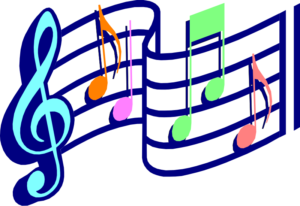 The clavichord is a small keyboard instrument which was designed for private enjoyment. It’s more expressive than the harpsichord, but it’s very quiet. In recordings, clavichords may actually seem to be quite loud. This is because they tend to be recorded at fairly high volume levels.
The clavichord is a small keyboard instrument which was designed for private enjoyment. It’s more expressive than the harpsichord, but it’s very quiet. In recordings, clavichords may actually seem to be quite loud. This is because they tend to be recorded at fairly high volume levels.
Clavichord strings are struck by small pieces of metal called tangents. The tangents remain in contact with the strings while the keys are pressed.

In the following video, Steven Devine introduces the clavichord… from his kitchen!
As shown briefly in the video above, a clavichord allows the performer to produce a type of vibrato. That means making the note ‘wobble’, as a violinist can do. On the clavichord, this is known as bebung. Here is a very good demonstration:
There are two types of clavichord, fretted and unfretted. In this next video, the difference between the two types is explained and demonstrated.






